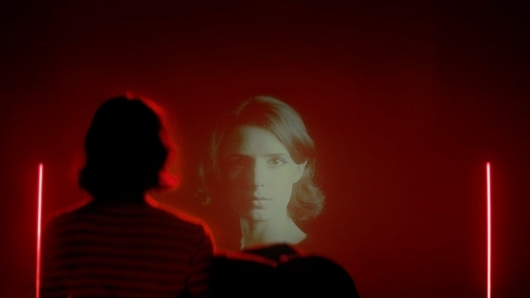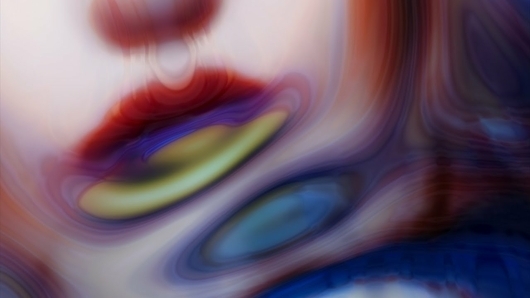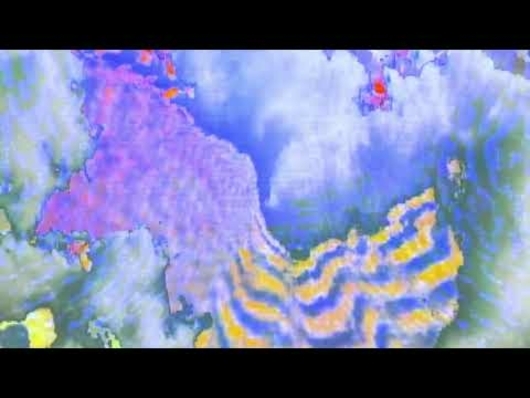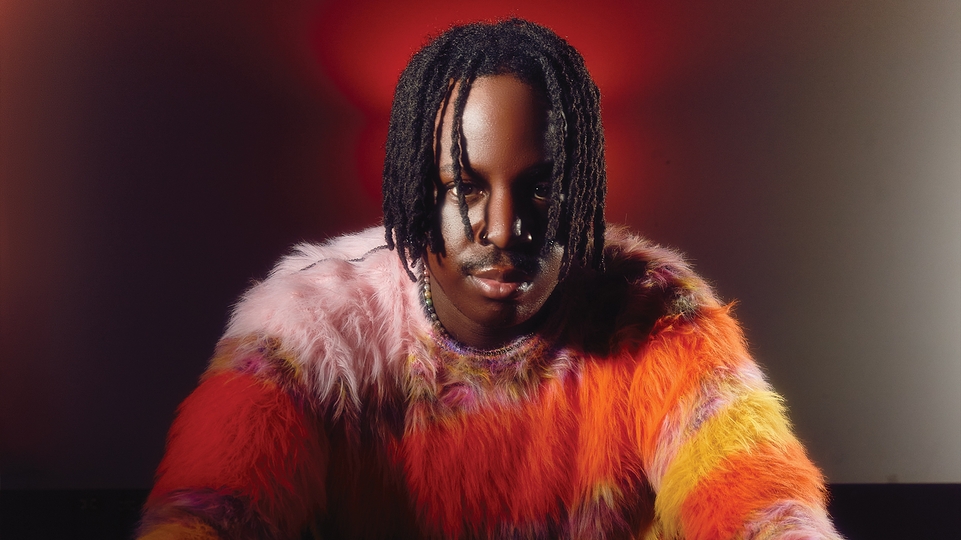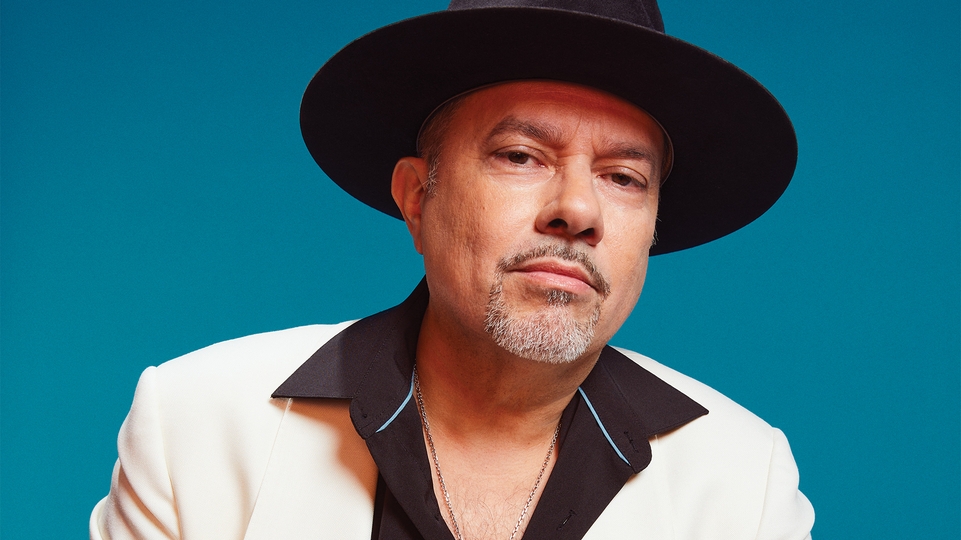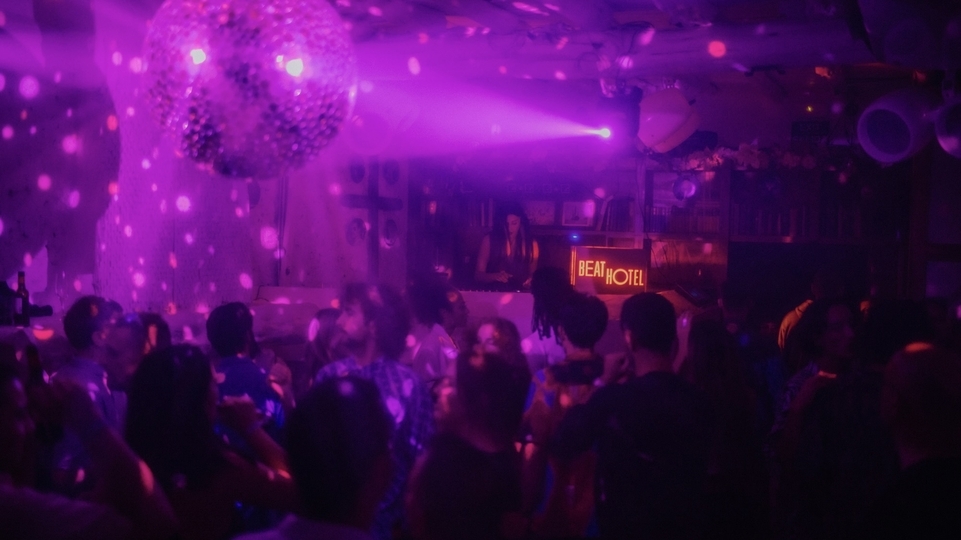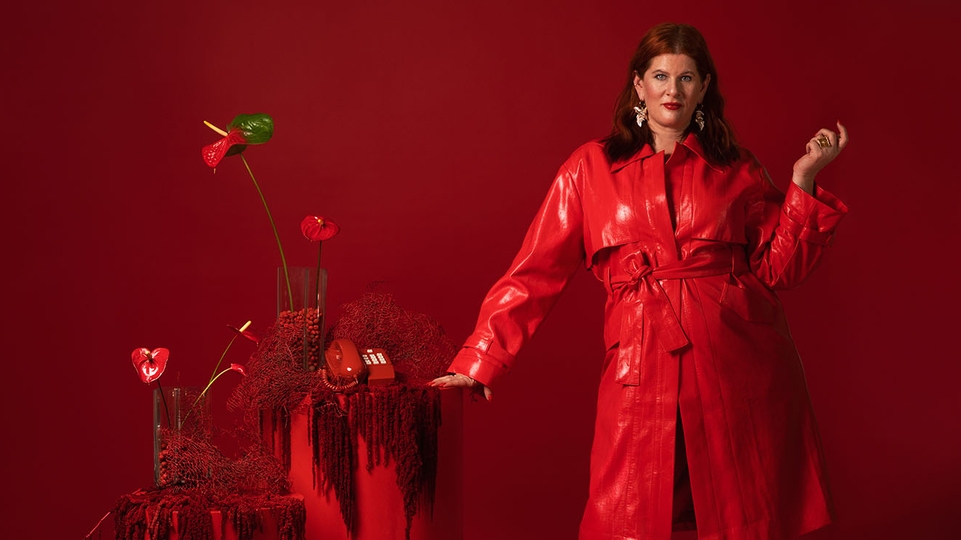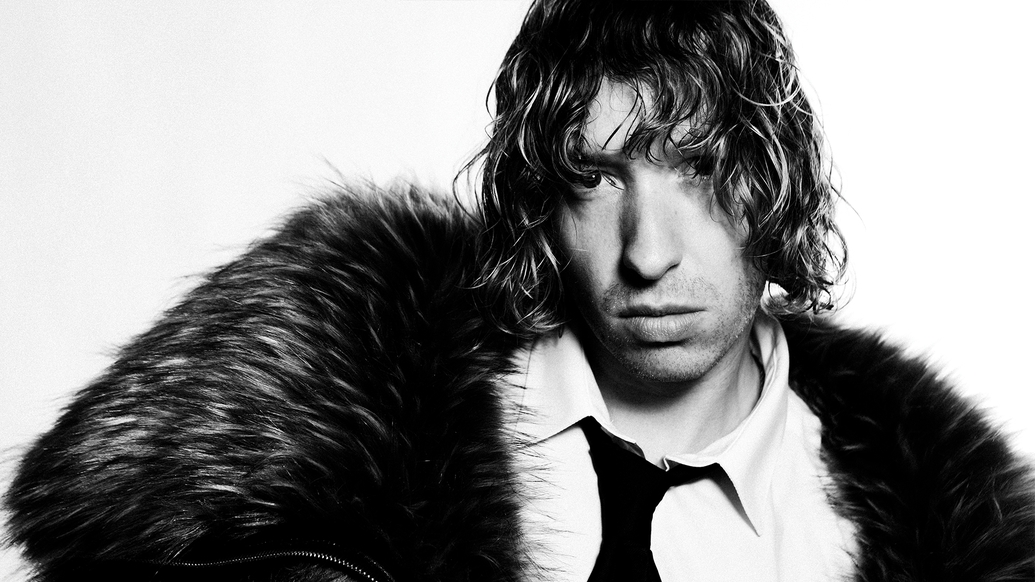
Daniel Avery: truth matters
Daniel Avery has made the defining album of his career to date with ‘Ultra Truth’. Incorporating everything from techno and ambient to jungle drum & bass, it features contributions from SHERELLE, HAAi and Kelly Lee Owens, among others, and is simultaneously raw and beautiful. Anna Wall meets him in a North London café to talk about collaboration, staying true to himself, and the enduring influence of Andrew Weatherall
It’s a Monday morning, and we’re sitting in the garden of a modest café in Newington Green, North London. Outside, the final rays of summer sunshine lace the surrounding buildings, as Daniel Avery enters with a smile. This November, he’ll be releasing his fifth album, ‘Ultra Truth’, via Erol Alkan’s Phantasy Sound imprint, another landmark in a discography that spans over a decade, and he’s excited to share it with the world.
Avery is softly spoken, deeply thoughtful, and has a relatively quiet presence, but his music speaks volumes — and when it comes to discussing it, he’s passionate and highly articulate. Listening to his musical history, with releases that date back to 2011 until now — through his definitive albums on Phantasy Sound, and a scattering of early EPs on other labels like Optimo Music and Throne Of Blood — it’s clear that Avery is constantly challenging himself, consistently pushing the boundaries of where he’s been before.
Avery’s releases are exhilaratingly diverse; he’s never been one to play by the rules or be confined by dance music conventions. “I think a lot of what I did in those early days was to make records that stood out, that couldn’t just be placed in anyone’s set. They had a firm identity to them. That’s what I believe the first album is all about,” he says. “It’s not making anonymous club music, it’s making records that hopefully couldn’t be made by anyone else.” This adds up; it would take plenty of expertise to unravel, or replicate, the intricacies of his work.
‘Drone Logic’, Daniel Avery’s first album, was born in a time when he was on a perpetual creative roll, inspired by long days spent in the studio next to Andrew Weatherall, and endless lessons learnt from many nights warming up the pristine sound systems of fabric. It revealed a distinct understanding of the dancefloor — from the trippy psychedelia of ‘Drone Logic’, to a nod to the past with the prominent use of 303 acid lines and distorted melodies in ‘These Nights Never End’ — while uncovering his early ambient explorations via ‘Spring 27’.
It was a dynamic album that represented where he was at musically, and displayed the energy and enthusiasm that he still has today. Nearly a decade later, Avery’s fifth album, ‘Ultra Truth’, is an expression of where he’s at right now, both emotionally and musically, through a whole new palette of sounds; it’s one of his rawest, most personal, and sonically daring records yet.
Avery has always had an indie aesthetic, no doubt heavily influenced by his formative years listening to the sounds of Nine Inch Nails, Deftones, and My Bloody Valentine. He grew up in the coastal town of Bournemouth, the largest town in Dorset with a reputation for stag and hen dos, and after successfully veering away from the commercial chart music nightclubs that encouraged them, he discovered a more alternative route into dance music around the age of 17. “There was a club night called Project Mayhem that happened every Thursday. It mixed a load of electroclash records, Kompakt records, that side of electronic music, but with guitar music as well. The second I walked in I was like, ‘Ah okay, I love this’,” he enthuses.
It quickly became his local hangout, and after realising their tastes aligned, the promoter, Matt, gave him a foot-in-the-door opportunity to DJ. “Until that moment I had no idea I wanted to do it. But the second I did, a light just lit up inside me,” he recalls. “I loved it.” Since then, he’s never looked back. It was an opportunity to blend genres and finally intertwine all his musical worlds, weaving from his teenage love of indie rock bands, through other musical inspirations like Björk, Portishead and Massive Attack, and electronic acts that interested him like The Chemical Brothers and Underworld.
London beckoned from a young age, and it was here that he made some of the intrinsic connections that led him to where he is now. Enthralled by the vibrant nightlife of the city, he moved to the capital in 2007 and began carving a name for himself, originally under the alias Stopmakingme. “That was a silly joke name that we all came up with,” he explains. “I consider that time to be my first band really. It’s all extremely formative. It really hit me this year that I was 18 when I started, and I’m 36 now, so that’s half my life I’ve been DJing. It’s pretty wild to think that there’s probably been so few weeks that I’ve had off in that time. So it’s very much a part of me.”
Stopmakingme was short-lived, and after a handful of releases in 2010-11, he reverted to using his own name. It was a pivotal time for Avery. During his early years in the capital, he worked for much-loved record store Pure Groove; however, it was at a time that record stores were struggling, and it was eventually forced to close. “I was really faced with a turning point moment,” he remembers. “I was happy to be in music, doing anything in music in fact, but that was the moment I realised I could either get another job selling or promoting other people’s music, or I could really make a go of doing something of my own. It was a real leap of faith moment.” He began borrowing musical equipment and experimenting as much as he could.
This turning point was also an opportunity to redefine himself musically. He was on a creative roll, remixing a variety of acts that included The Horrors, Primal Scream, Scarlett Etienne’s short-lived electronic outfit, Scarlett & The Pixels, and Andrew Weatherall and Timothy J Fairplay’s The Asphodells. (It was during this time that he began working at the studio next to Weatherall’s.)
“I was happy with the sound that I was finally able to capture, after all this time. It had taken that amount of concentration to really get to that point,” says Avery. Then, in 2012, he self-released a cassette tape called ‘Divided Love’; the first side focused on club music, while the other displayed a collection of drone, ambient, and esoteric sounds.
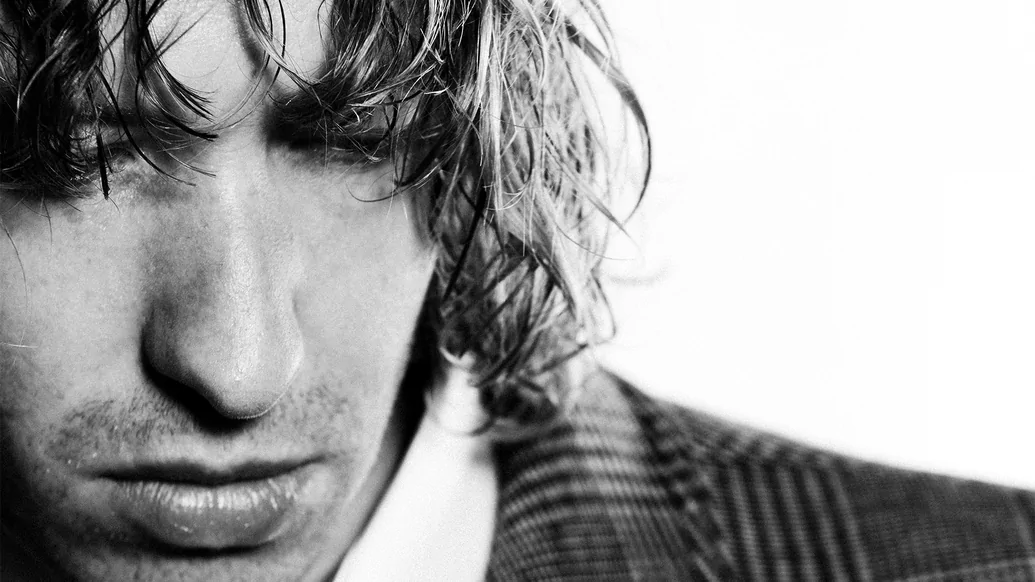
Things had gathered momentum quickly for Avery; alongside his musical output he was playing out every weekend, with a club residency at fabric that allowed him to further perfect his craft of setting up a dancefloor. “My job was to warm up a room, to create an atmosphere from nothing, and the DJs I love like to do the same thing. They do that through interesting sounds and sideways feelings; it’s about turning heads, it’s not about hands in the air all the time. Not at that point anyway, that comes later,” he says.
He looks back on these years affectionately, and recounts them vividly. “The whole scene was very exciting back then,” Avery remembers. “For a young kid as well, because there was so much energy in what was going on, the music had so much energy. It was around the time of all that electro stuff happening, labels like Institute, Ed Banger, it all just felt like the coolest fucking thing in the world at that point. Being in my early twenties, it really felt like ‘our’ music. All so cool, and the fashion that went with it too. The bands that were emerging at the time, it was a big melting pot. When I first started DJing, I was still very much finding my feet at that time. I was extremely lucky to be taken under the wing of fabric in particular, but nights like Bugged Out! then must have seen something in me at that point too,” he says.
He had also formed a friendship with Erol Alkan, an artist he’d looked up to long before they’d ever crossed paths. “I’d been a huge Erol fan as a kid. Talking about moving to London in 2007, he was the king of everything back then. Head of the table. Even before that I’d loved Trash and everything he was doing,” he says.
Not long after joining the fabric fold, much to his surprise, Avery was approached to head up a mix for the legendary ‘FABRICLIVE’ CD series. Filed between DJ Hazard and Ben UFO, Daniel Avery’s mix marked No.66 in the long-standing series. The compilation embodied his vibrant sound, championing that particular approach to house and electro that was emerging out of London and further afield during that time; all with an indie twist. Alongside plenty of Avery’s own music, it blended Simian Mobile Disco’s melodic ‘Supermoon’ and Miss Kittin’s bubbling ‘Girlz’ into more sombre, minimalist works such as Kassem Mosse’s timeless ‘Workshop 12 (A1)’.
One of the final tracks on the V/A, ‘Dry Heat’ was a record made especially for the occasion by Andrew Weatherhall, under his post-punk outfit’s name, The Asphodells. “The day Shaun [Roberts] asked me to do the ‘FABRICLIVE’ CD, I texted Andrew. I look back on this now and I can’t believe the balls of me back then,” he laughs. “I don’t feel like I would do something like that now, but again the naive energy of that time was coming through. I texted Andrew and I said, ‘I’ve just been asked to do a ‘FABRICLIVE’ CD, and I don’t suppose you have any offcuts knocking about that I could use? If you happen to have anything, give me a shout’. He called me up straight away, and said ‘Good work dear boy, I’ll make you something... what BPM do you need?’ I called Shaun after that, and he later told me he thought I’d been drinking!” he laughs. It’s one of Avery’s favourite memories of Weatherall, of which there are plenty.
A few months after the fabric mix was in motion, Avery recalls meeting Erol Alkan for coffee. Alkan revealed that he was expanding his label Phantasy Sound, and asked if he had any demos. The next week, Avery made ‘Taste’ and ‘Need Electric’, which became the first records he released on the label in 2012, and both appeared on his ‘FABRICLIVE’ mix the same year. “When it’s all laid out on the table to me like that, it amazes me how quickly things moved,” he says.
We discuss the exciting pace and the tangible momentum during those early years in his career. “Unbeknownst to me, I was gathering so many ideas inside of me during that time. Something was waiting to burst out of me and it took me to sit down and say ‘Okay, let’s try and channel something here’. Then it all came out so quickly.”
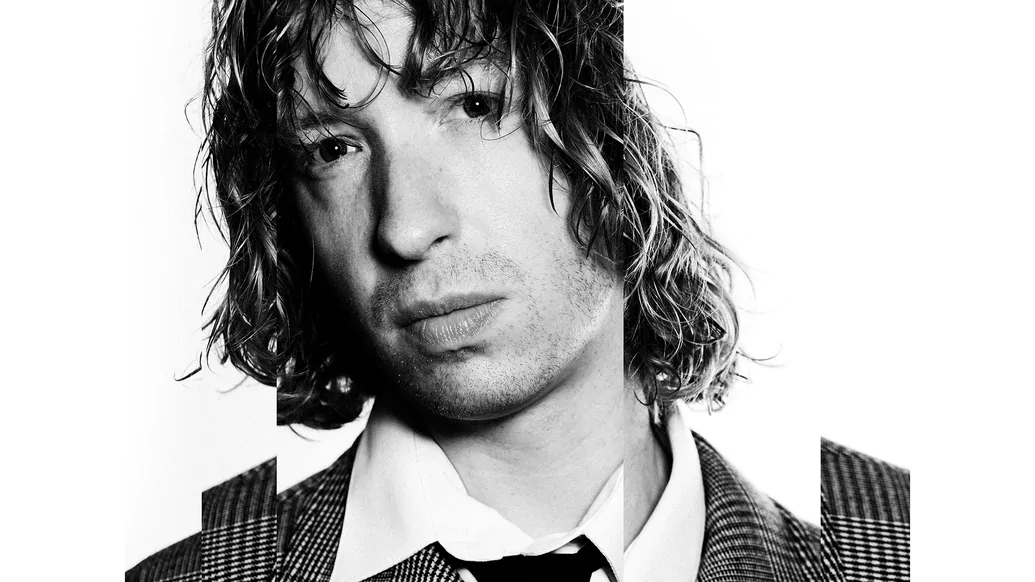

“Back then, when no one really knows who you are, there’s a sort of joy in the naivety of just making music that sounds good to you. Not trying to impress everyone else...”
Over the following year, he dedicated himself to the studio and continued to evolve his sound, and the next body of work was to become his debut album, ‘Drone Logic’. “I was on a creative roll with things. I was going to the studio and feeling satisfied most days, which doesn’t happen all the time. But back then, when no one really knows who you are, there’s a sort of joy in the naivety of just making music that sounds good to you. Not trying to impress everyone else, you’re not trying to repeat some past success, because you haven’t got any past success. This is your first attempt at it, and so it definitely felt like there was a momentum to what was going on.
“The story of the album comes about because I was often working in the studio next to Andrew Weatherall’s, with Tim Fairplay who was Andrew’s engineer,” he recalls. “It was amazing to be hanging in the next room to Weatherall and seeing him at work and just living his life. He treated that studio like a day job; whether he was making music or not he’d come in every day, with a crossword and a spliff, and just sit reading books, or listening to music and absorbing art in a way that would influence him. The most inspiring thing ever really. And so a huge luxury of that was that when I was finishing these tracks, I was able to hand him a CDR, and he’d been starting to play some of them. That was a dream come true for me.
“I made the track ‘Drone Logic’ itself with Weatherall firmly in the front of my mind,” he continues. “He had just started his night A Love From Outer Space — slow, psychedelic, chuggy, trippy club music. So I wanted to make a track that he might play there. That’s where the idea for ‘Drone Logic’ came about. So I made that and I handed it to him, and he called me the following morning, and said ‘That thing you gave me yesterday, I played it and it was the biggest track of the night’. I immediately called Erol, hands still shaking, and I told him the story and he said, ‘I think we’ve got something here; I think it’s time we made an album’.”
‘Drone Logic’ was released in 2013 via Phantasy Sound, and gained high acclaim from critics, DJs and music fans alike. As the hype continued to grow around his album, Avery’s DJ career was also accelerating at lightning speed. On weekends he was touring all over the world, from Paris to Amsterdam, New York to Montréal and beyond.
In the years that followed, Avery became fully immersed in that side of his career; a DJ who was once opening up an empty dancefloor at fabric was now headlining huge shows and festivals in front of thousands of revellers. It led to a very different story in the lead up to his second album. “The first one was a rush of excitement and fun and naivety. That sort of energy to it. The second album — there’s a reason why it took five years. I fell into every single producer trap in that five years, every difficulty you could have. I hit every single hurdle along the way,” he admits. “During that time my entire life changed because I became a professional DJ. I’d not been that before, and I was being asked to play all over the world. It was an amazing time, but it was also something of a confusing time. My identity went from being a music lover who was making music to satisfy myself... I felt like I’d just become a DJ.”
The music he was playing was also changing — adapting to the time-slots he was being booked for. “I was becoming more interested in techno music, and harder stuff, and the more that time went on I just thought, ‘Well I’m a DJ now and this is what I do, so I better make some fucking techno records’. And I couldn’t make techno records,” he says, wistfully. “I put so much pressure on myself. I’d come away from the studio so frustrated every day.”
‘Song For Alpha’ didn’t emerge until five years after his debut. There was a building pressure to follow the success of ‘Drone Logic’, and he was convinced that he didn’t want to repeat himself. The breakthrough came — along with some hard-hitting advice from a friend — when he was finally able to move away from that perception of himself as a techno DJ, and began writing music that didn’t fit the mould. Veering away from the pressures that the industry was putting on him, ‘Song For Alpha’ touched on other genres; it was perhaps his most experimental work yet, and while exploring the outer reaches of electronic music, it delved into different themes and frequencies, not dissimilar to those of Aphex Twin’s ‘Selected Ambient Works’.
Of course, there were moments that nodded to Avery’s earlier releases, but the overall feeling was different; it felt like the antithesis of his touring life, and revealed a far more introverted side. ‘First Light’ set the scene for something entirely new for Avery, an ambient piece that led beautifully into the immersive, downtempo 808 rhythms of ‘Stereo L’. Some tracks took a more minimalist approach, like the tension-building techno aesthetics within ‘Sensation’ and ‘Diminuendo’.
In contrast, most of the more powerful club tracks were blended between sweet and sombre ambient explorations. ‘Slow Fade’ reduced the tempo once again across expansive soundscapes — a comparison could be the early dub techno releases of Ilian Tape. “‘Song For Alpha’, I believe, is the sound of someone trying to find the quiet moments amidst the madness of touring,” says Avery.
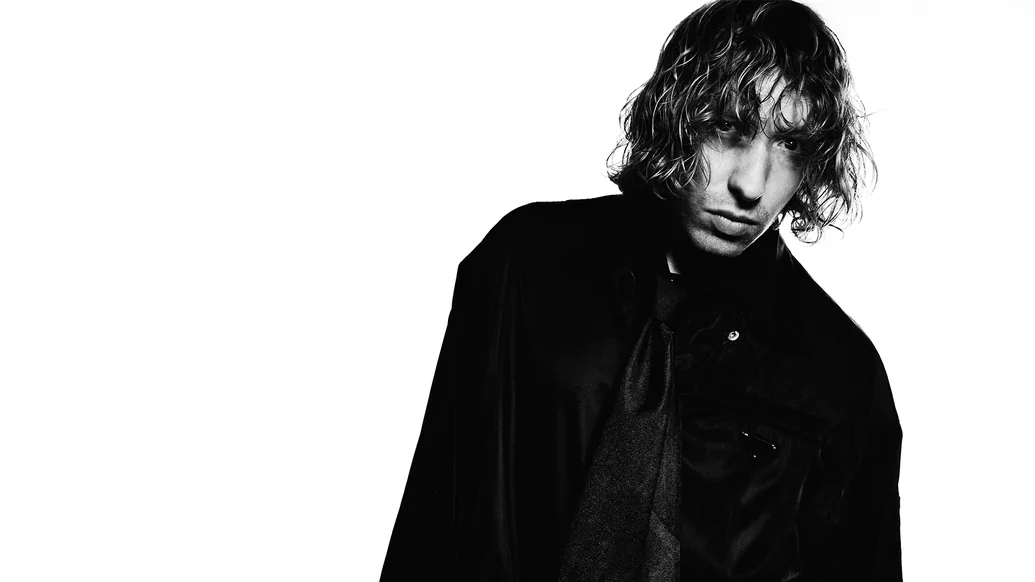
When ‘Song For Alpha’ was released, it marked another transitional period for Avery, an opportunity to express himself as an artist, not just as a DJ. “It felt really scary to do it, but once it was out I felt completely different afterwards,” he reveals.
The following two albums flowed freely; ‘Love + Light’ in 2020, and ‘Together In Static’ in 2021, which were both recorded during the pandemic. He believes that the whole idea of lockdown in many ways saved his life. “I was going full throttle touring at that point and everything that lifestyle entails,” he admits.
In interviews that he gave in 2018 around the release of ‘Song For Alpha’, he often spoke about clubs being a ‘peaceful place’. “I kept repeating this phrase about the ‘quiet’ of the club, at a nightclub being able to close your eyes, and forget about the outside world, which I think is true and I still believe. But if I’m honest, looking back at that now, I went too far down that route and I was running away from a lot of things that I didn’t want to focus on in my real life.”
We discuss the idea of the club being a place of escapism, full of transient, ‘in the moment’ experiences. “That lifestyle is born out of a fear of ‘what if this all just disappears tomorrow?’ And then it did all end, the next day. A lot of our fears came true about it,” he says. “But once the dust had settled and I was still standing, I realised that I still have the power to make music.”
‘Love + Light’ and ‘Together In Static’ were very much lockdown albums for Avery. “I feel that they’re very genuine records of that time, and they were both really beautiful reminders of what I loved doing, and that’s being in the studio and leaving records behind.”
In 2020, ‘Illusion Of Time’ was also unveiled, a highly anticipated collaboration with Alessandro Cortini of Nine Inch Nails. It was a meeting of two minds exploring their mutual love of synthesisers, tape hiss and atmospheric soundscapes.
They began talking over Twitter, expressing an appreciation of each other’s music, and ahead of a festival they were both playing in Los Angeles, decided to create some music together. The two tracks were ‘Sun’ and ‘Water’, which were subsequently pressed to wax for a special seven- inch. After a limited run of 50 sold out at the merch stand, it was a catalyst to make more together.
In 2018, Avery was invited to tour with Nine Inch Nails, playing a select run of shows warming up music halls and theatres across the USA. It was another dream come true for him. During one of their days off in New York, Avery and Cortini met and pieced together all the music they’d created so far, which became ‘Illusion Of Time’. It’s an album that Avery is immensely proud of, and the pair plan on more collaborations in the future. It came together very organically, and Avery says he felt truly liberated working on it. It’s a headspace that he’s been in recently, too, one that feeds into his latest album.


“Sonically, it’s not the easiest album to listen to; it’s noisy, it’s intense, it’s distorted, but that’s because I wanted it to be. I want it to be like you couldn’t ignore it.”
‘Ultra Truth’ is one of his most adventurous records to date; it’s unapologetic in its rawness, and there’s a beauty in its wildness. It opens with ‘New Faith’, a beautiful piano piece that sounds like it’s been pushed through a tape machine one too many times; the sorrowful, decaying tremors of notes that slowly dissolve into the ether are reminiscent of William Basinski’s early ’00s album ‘Melancholia’.
Elsewhere, the atmospheric pads and grainy textures layered across the distorted beats of title track ‘Ultra Truth’ operate at a far slower tempo to the high-octane breaks of ‘Devotion’ and ‘Higher’, but one thing they all have in common is that they still have the capacity and breadth of frequencies to rumble the structure of a vast warehouse space. Distorted ambient and drone are pushed to extremes on ‘The Slow Bullet’, while ‘Overflowing With Escape’ presents an intensely smouldering, cinematic soundscape. It’s noisy, dynamic and diverse; both intense and ethereal.
The time of club closures and lockdowns, with none of the previous distractions, was somewhat introverted for Avery. “I didn’t have an escape route. There were several things in my own life I had to look at deeply, and it was hard... to realise exactly who I was. It was a complete recalibration, a complete reset. That’s why I wanted this record to sound like it was on fire. Sonically, it’s not the easiest album to listen to; it’s noisy, it’s intense, it’s distorted, but that’s because I wanted it to be. I want it to be like you couldn’t ignore it. I could no longer ignore these things that were trying to knock on my door before, but I was just running into a nightclub or running into that lifestyle.”
It’s an album that Avery wanted to make with no burdens and no preconceptions; an opportunity to express himself whole-heartedly and push things as hard as he wanted to.
‘Ultra Truth’ was recorded in his London studio with a mixture of hardware and software. “I am really fascinated with those areas where those two worlds meet. I have some hardware in my studio but I’m not a purist in that way. I love a load of stuff in the box too. Working with Cortini had a huge influence on this sound, in that he leaves a lot of the noise and hiss and quite often exaggerates that on his own music. So that was a huge part of the sound.”
Although it was made during a time of relative solitude, Avery prefers to work with company. James Greenwood, AKA Ghost Culture — who’s also closely affiliated to Phantasy Sound — is someone that Avery has worked with since day one, as is good friend Manni Dee. “He (Manni) comes from an industrial techno world and his encouragement to just keep pushing me, and pushing my sound further and further, had a huge impact on this record,” he says.
Avery became fascinated with the world of distortion, and pushing machines to extremes to scope their outer limits. The record is mixed by award-winning engineer, producer and mixer Marta Salogni, whose impressive list of credentials includes Björk, Frank Ocean, FKA twigs and The xx, to name a few. “She’s a genius,” enthuses Avery. “The whole time we were talking about mixing it, it was just like, ‘how hard can you push it?’ And so she was very up for the challenge. Everything is pushed to just before breaking point. I love that moment where things feel like they’re about to snap. But they don’t quite, and you’re still in control of them.”
During our conversation, Daniel often returns to the idea of freedom during the recording process, which can be heard through moments of cacophony and dissonance, but also serenity, thought-provoking stillness, and quiet contemplation.
We return once again to speak in depth about an artist who had such a huge impact on the life, musical path and aspirations of Avery, and so many others — the late Andrew Weatherall. “Way before I’d ever met him, he was someone who lit the road for me,” says Avery. “Playing back- to-back with him many times over the years was always a masterclass. A patient DJ, someone who’s completely in control, just being able to stand next to him and witness it — let alone play records alongside him — was just an incredible experience.”
‘Lone Swordsman’ was a track that was created as an immediate tribute to Weatherall, recorded on the day Daniel found out the tragic news of his passing in early 2020. It’s a powerful and heartfelt record, and it sounds so much like he was channelling Weatherall’s spirit that day. He was in the studio when his good friend Richard Fearless from Death In Vegas broke the news. “Talk about the wind going out of your sails,” he says, softly.
“‘Lone Swordsman’ just came out [of me] that day. I don’t know how much I believe in the cosmic energy of the universe but... maybe,” he says, thoughtfully. Weatherall was often known to traverse the boundaries of genre, going from punk to acid house in the same breath, with a distinctive touch that made his sound his own. “Whatever he was doing, you could tell it was him. Whether it was a minimal record, or whether it was a post-punk record, it had his fingerprints all over it. So it doesn’t matter what you’re doing, you haven’t got to just do the same thing over and over again, you can become known for something else — just try another style, or go down a side alley, and it’s still going to be you at the end of the day. As long as it’s genuine.”
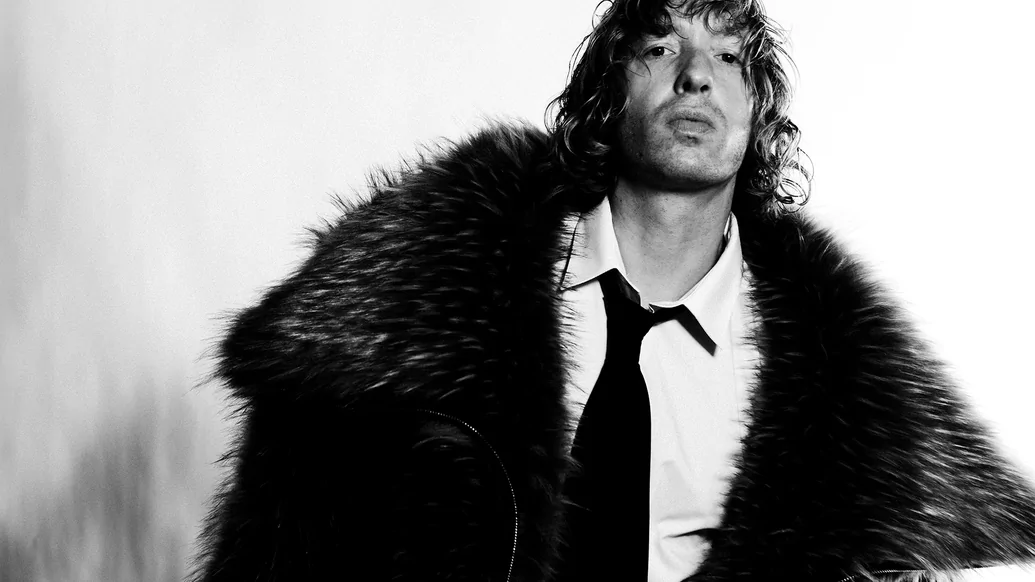
“It’s not intended to be depressing, it’s actually intended to be welcoming, but it has a dark edge to it. That’s something I wanted to push.”
This is something that Avery radiates in droves — authenticity. The featured artists on ‘Ultra Truth’ are a representation of his loyal friendships and collaborations with artists that he truly admires. “I wanted far more of a human element on this album than I’d had before,” he explains. “So I wanted voices; whether they’re poems or spoken word, or sung lyrics. They all came about very naturally. Some incredibly close friends like HAAi, who sings on two tracks, or Kelly [Lee Owens], who returns 10 years on from being the voice on ‘Drone Logic’ — I wanted some kind of full circle there, and of course, she’s become a superstar in her own right in that decade following. But then people I’ve met along the way who I felt inspired by, like Marie Davidson, SHERELLE, and James Messiah, who closes the record. Also Jonnine Standish, HTRK being one of my favourite bands ever.”
The collaboration with Jonnine, entitled ‘Only’, is a perfect melding of their two worlds; her ethereal voice sounds like it’s been pushed through an amp as it resonates across industrial, distorted, downtempo drums. SHERELLE’s voice is a timely introduction to ‘Higher’; her voice-note speaks of an “intense feeling of joy and excitement”, and the importance of emotional catharsis in music, before the track descends into fast-paced, expansive breaks. It’s a key record that brings yet another layer of rawness and energy, recalling the jungle/drum & bass and hardcore that was coming out of the UK in the ‘90s and early 2000s, but with a thundering magnificence that’s all Avery. “I’ve always loved artists like Autechre and Aphex Twin, for instance, who were able to take those sounds and present them in a different way. I love jungle music but I am no expert on it, so I wanted to just give my interpretation of what a jungle record could be,” he says.
Avery’s albums have always been conceptual, with a strong visual aesthetic. The music video for ‘Higher’ feels highly futuristic and somewhat ungrounding; the imagery transports the observer into a mountainous, alien land. The creative mind behind it is German artist Claudia Raphael, who has also created the album artwork.
“I keep returning to this idea of the album being a true version of myself,” Avery says, when we discuss the concept further. “I’ve gone back and looked at a lot of the things that got me into music in the first place. In the mid-/late ‘90s when I was a kid growing up, a lot of the things that really were influencing me were bands like Nine Inch Nails, Deftones, Portishead and film directors like David Lynch, David Fincher and Chris Cunningham. For me it all has a real dark edge to it; shadowy but completely alluring, completely captivating. Very much alternative. It’s not for everyone, but I was just so mesmerised by that whole world,” he says passionately.
“I wanted to present my version of that world, and again that’s why the record is distorted and so noisy. I wanted all the artwork to have the intensity of that era that meant so much to me. Another thing I loved about that era is that it was all very forward facing, and it all had a real futurism to it. It felt kind of scary and it felt like something was just around the corner, but it had an excitement to it — I don’t know how I can describe this properly, but that whole era, I believe, said...” He pauses. “These are dark times, which I believe is mirrored very much now, but the way to do it is if we just stick together, if you want to come into the shadows with us, we’ll all stick together and form a gang, a tribe here, and we’ll get through it together. That’s what I wanted to present with my own version here. That’s what I wanted the artwork to represent too, a sort of 20-25 years on from those times, my own future-facing version of those shadows, of those feelings with a darker edge. It’s not intended to be depressing, it’s actually intended to be welcoming, but it has a dark edge to it. That’s something I wanted to push.”
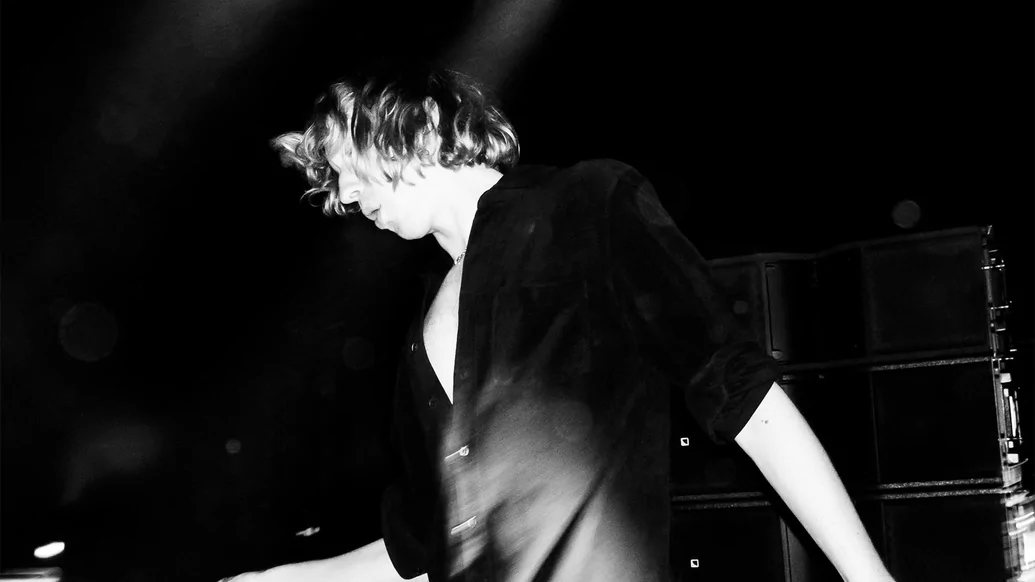
Since clubs have reopened, Avery has returned to the fast-paced life of touring, but with a brand new perspective. “I feel my relationship to it has changed entirely. Two things happened; one is that I feel I’m enjoying DJing more than I ever have now. And it’s not just because we lost it for a bit. It’s because I feel completely myself at the moment. I know that I’ll always be able to make music, and to make albums, and DJing is just an extension it’s meant to go hand in hand with. They’re not meant to battle each other, like what happened during the period they were fighting each other in my head. One was getting more space than the other and they just weren’t matching at that point, those energies weren’t matching. But I really feel like the balance is there now.
“The second thing that’s happened is... I’ve always wanted to do a live show, for years, and felt that with this album — because I felt in a comfortable place —it was the time to do it. So I’ve just done a run of summer shows and it’s the first time I’ve ever done proper live. I did two small ones for the ‘Together In Static’ album last year in a church in Hackney, it was all seated. It felt so great,” he remembers.
The shows took place last February, in the intimate surroundings of Hackney Church. The flyer simply read: ‘A standalone concert with music created exclusively for the performance. Seated, distanced and designed to fill your soul in slow-motion. Hymns for the silent generation.’ This year, Avery aims to create an entirely different experience. “This is a whole new live show,” he continues. “It’s electronic, but I wanted to capture the feeling of the rock gigs that I love so much... intense, breathless, something that you walk away from blinded by strobes but happy inside. So those three things together, they all feel like they’re part of the same thing at the moment, part of the same world — the live show, DJing, and making records — and the live show feels like an extension of the studio. It all feels amazing right now.”
His first gig back after the pandemic was fabric’s 48-hour reopening, and he remembers it feeling just as strange as it did incredible. His first festival experience back was at Lost Village, where he played a memorable back-to-back with HAAi. That was exactly one year ago; we take a moment to appreciate just how many tides have turned since then. “I look back at some of the photos of myself from just before the pandemic, and I didn’t look well. I was not well and my mental health was a mess, and even though I probably thought I was, I was not happy. This is not a new story, I know this is a common story amongst anyone who tours, I’m not the first and definitely won’t be the last to have that realisation. There’s nothing unique or special about my story. But I did go through that, and so this year I’ve tried to re-enter the world on my own terms, rather than being dragged along by this runaway train. I really feel like a new person actually, coming back into it.”
This year has been a busy one for Avery; since March he’s hit the road playing nightclubs and festivals across the UK and Europe with no signs of slowing down. To mark the release of the album, this November he’ll play three live headline shows in three of his favourite cities: London, Paris and Glasgow. “It’s still very much a work in progress, to be honest,” he replies earnestly, when we ask about his live setup. “It’s sort of a mixture of software, hardware, and a big fuck-off light show, basically,” he laughs. “I’m really happy with how it’s gone so far, and it’s just the beginning. We’ve got some big plans for it.” He will also headline a free DJ Mag Presents party in Amsterdam’s Lovelee on 20th October alongside New York DJ Gabrielle Kwarteng as part of this year’s ADE. You can sign up for guestlist here.
Avery is in a good place right now; there’ll be plenty more music to share, and he’s excited. The lessons he learned from Weatherall continue to resonate throughout his existence, whether they’re inspiring his productions, or guiding his general outlook on life: never compromise, always be true to yourself, and allow whole-hearted, unapologetic creativity with no bounds.
“‘Ultra Truth’ came from deep inside me,” he says. “Even talking about it now, it’s my most honest, my most, I believe, genuine. It’s a record that sounds like me. I put it on now and I think, ‘That’s who I am right now’.”

